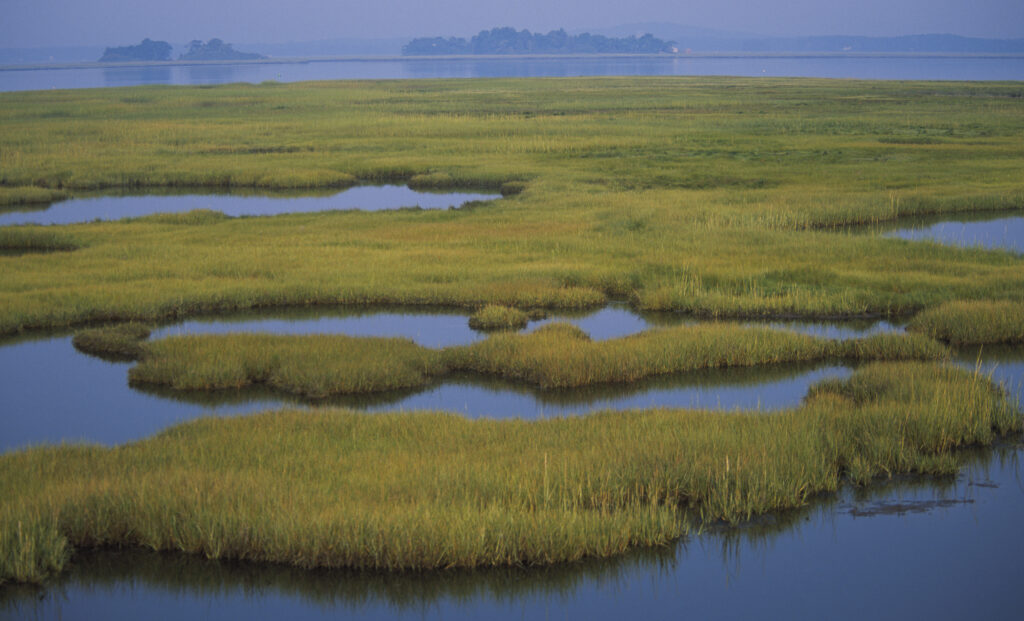by Deva Holliman

Coastal wetland in Parker River National Wildlife Refuge, Massachusetts. (Credit: U.S. Fish and Wildlife Service)
Between 43% and 48% of coastal wetlands along the continental U.S. may be unable to survive rising seas, according to a recent study from the Smithsonian Environmental Research Center (SERC).
The study, published in the June issue of Earth’s Future, highlighted the capacity of coastal wetlands across the continental United States to resist sea level rise. While wetland plants are adapted to the stress of salty tides, sea level rise threatens to entirely submerge some sections of marsh—eventually causing these plants to die.
The survival of wetlands is essential to the continued prosperity of coastal communities. Wetlands protect shorelines from damage by severe storms. They provide vital habitats for fish and shellfish that humans rely on for food, and support numerous endangered and endemic species. To many locals, wetlands also tie into their cultures and identities, and provide tourism revenue.
“Our collective economic and cultural wealth is diminished if we don’t have tidal wetlands,” said SERC scientist James Holmquist, who spearheaded the study.
Wetlands can often avoid encroaching tides in two ways: by migrating inland, or by building new layers of soil so they can rise vertically. However, if sea level rise occurs too quickly, the wetlands may not be able to keep up.

James Holmquist collects elevation measurements at SERC’s Global Change Research Wetland. (Credit: Lisa Beers)
The researchers found major geographic differences in wetland vulnerability. Marshes in South-Central states like Texas and Louisiana are most at risk of collapse, due to high rates of projected sea level rise and little available land where marshes can migrate. The wetlands of the Mid-Atlantic, including those in Maryland, are also particularly vulnerable to sea-level rise.
On the flip side, wetlands in the Pacific Northwest may be safer, thanks to low rates of projected sea level rise and large tidal ranges.
“This is a story about top-down priority setting, in terms of funding and research,” said Holmquist. “It shows that so much of marsh research is local, and we really need a national focus in understanding the vulnerability of our coasts to this very real and present danger.”
For Holmquist, this study is the culmination of years compiling data from a variety of sources, from government databases to scientific papers. Holmquist collaborated with other scientists from around the country to build and analyze a comprehensive wetland dataset. It included information like soil formation rates, tide-gauge and elevation data, and sea level projections.
“For me, it’s the questions that are coming out of this, and what we do next, that is most exciting,” he said. Holmquist wants to explore the early warning signs for coastal wetlands. “We need to start developing better information on when we think marshes will collapse,” he said.
While the new study predicts when and where wetlands will be most vulnerable, it could not reveal what ecological collapse would actually look like.
“Is it a gradual process, or a quick change from marsh to open water?” Holmquist asked. “Or can a marsh keep hanging on until a hurricane comes through and pulls the rug out from under it?”
Now that they’ve uncovered national trends, Holmquist also hopes to investigate solutions for wetland conservation and management that consider local differences.
“How do we plan to save as many tidal wetlands as we can?”

